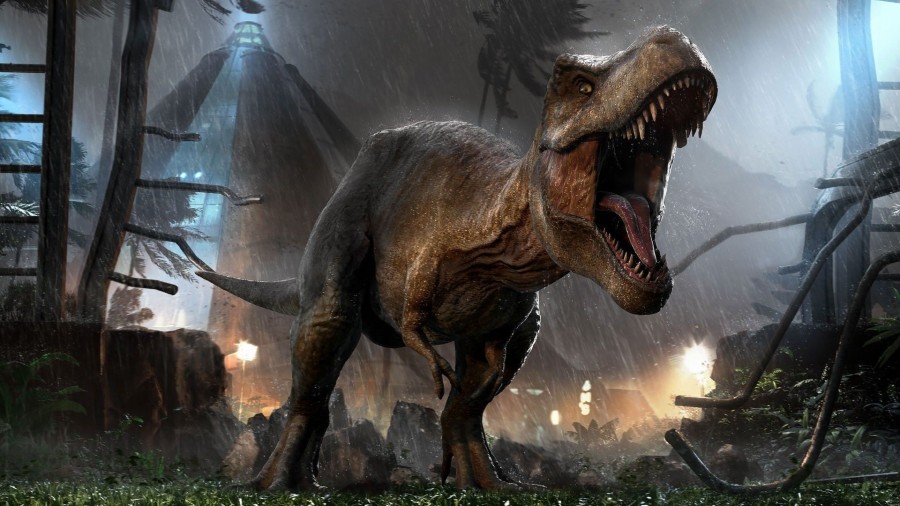Before they were killed off by a meteor that hit Earth 66 million years ago, some 20,000 adults of the iconic ferocious dinosaur predator — Tyrannosaurus rex — roamed North America at any given time, researchers have calculated.
That’s not a precise number, and the correct total could be far lower or higher because of uncertainties such as how long they lived, how quickly they grew and matured, or the rate of their metabolisms. Still, the research, published in the journal Science, opens doors in studying long-extinct dinosaurs beyond what can be gleaned from individual fossils.
Skeletal features can tell a lot about an animal. For example, someone looking at a human tooth could infer that it is suited for chewing both plants and meat, and the shape of the skeleton could yield an estimate of how fast a person can run. But the physical attributes cannot tell you how many people live in New York City, US.
Charles Marshall, a professor of integrative biology at the University of California, Berkeley, US, who led the research, said the work started with him wondering, when he held a T. rex fossil, how rare was that?
“Were there a million, a billion, a trillion T. rexes?” he said. “Is this one in a million, one in a billion, one in a trillion? How on earth could we know that number? We all know fossils are rare, but how rare are they? And so it really started with that question.”
Marshall and students in his research group started applying tools that biologists use for modern animals to the dinosaur era. The crux of their calculations hinges on an observation that there are many more small animals than big ones, that rats far outnumber elephants.
For living species, John Damuth, a biologist at the University of California, Santa Barbara, US, came up with a mathematical relationship, now known as Damuth’s law, between the average body mass of an animal and its expected population density.
The relationship is not universal but generally holds for large classes of animals like lizards or meat-eating mammals. So, for Tyrannosaurus rex, they had to not only plug in the weight of the dinosaur — which is about six tonnes, give or take a few — but also derive other numbers in the law.
That includes the metabolism. Dinosaurs are no longer thought to be cold-blooded like modern-day lizards, but they were probably not as warm-blooded as mammals. So Marshall’s team assumed a physiology in between that of meat-eating mammals and Komodo dragons. They also had to account for some uncertainty about where the dinosaurs lived in North America. Paleontologists don’t know whether the range of T. rex was limited to where fossils have been found in the western United States and Canada, or if it stretched to other places with similar climates back then, from Alaska to the East Coast.
Because so much is unknown about dinosaurs, the scientists were not looking to come up with a single definitive answer, but to provide limits on what they thought a plausible number might have been. “For most of the paleontological data, I don’t know how to guess a number,” Marshall said. “But I can tell you what a good minimum is and what a good maximum is.”
The calculations yielded a most likely standing population of 20,000 Tyrannosaurus rex adults. That would indicate a sparse distribution equivalent to two adults in an area the size of Washington, D.C.
But the uncertainty around that estimate was very broad. The same computer simulations indicated, with 97.5 per cent probability, that there were at least 1,300 adults but not more than 3,28,000.
Damuth described the new paper as a “fine contribution”. He added, “In spite of the uncertainties associated with most of the model parameters the paper comes up with a solid qualitative result.”
If the 20,000 number is correct, over the 2.4 million years that T. rex walked the earth, there would have been a total of some 2.5 billion adults that ever lived.
But even Marshall thinks the 20,000 number is likely low. “It just seems inconceivable you can last a couple of million years with those few individuals,” he said. “You just need some horrible plague or something and you’re gone.”
He said he thought the population could have been tens of thousands or maybe 1,00,000 or 2,00,000. A large part of the uncertainty is that Damuth’s law is not absolute. Jaguars and spotted hyenas are both meat-eating mammals of similar size, but the population density of hyenas is some 50 times higher.
“Using these methods is really the exciting part,” said Peter Makovicky, a paleontologist at the University of Minnesota, US, who was not involved with the research. “I don’t think many of us who are sort of the, let’s say, skeletally focused paleontologists have thought this would be possible, but I think it’s really eye-opening in that sense.”
The study did not try to count younger T. rexes. In recent years, research suggests that juveniles were almost like a different species. Although they may have been more numerous than adults, few fossils have been found, indicating that most survived this period of life or that the bones of juveniles were less likely to be preserved.
Marshall was also able to get an answer to the question he started with: Only about 1 out of every 80 million T. rexes that ever existed was fossilised, although, in the most populous regions, the number may be as high as 1 in 16,000.
NYTNS










